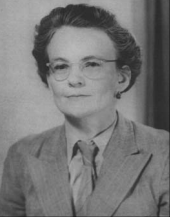Elizabeth Alexander
 |
| British geologist and physicist, Frances Elizabeth Somerville Alexander Credit: Mary Harris |
In July 1935, Elizabeth married Norman S. Alexander, a New Zealand physicist, and in 1936, they moved to Singapore where Norman accepted the Chair in Physics at Raffles College and Elizabeth began work on tropical weathering. In 1940 and 1941, Elizabeth worked at the Singapore Naval Base to aid the British Royal Navy on radio direction-finding. In early 1942, with WWII in full force, Elizabeth moved with her children to New Zealand, where she became the head of the Operations Research Section of the Radio Development Laboratory.
 |
| The office building where the Radio Development Laboratory was located. Credit: Mary Harris |
Elizabeth was particularly interested in researching propagational effects and developing theories that would help to predict radar performance from meteorological data and vice versa. As a result, she became a key player in a radio-meteorological project to investigate "anomalous propagation," radiation that looked as though it originated from over the horizon. This later evolved into the "Canterbury Project." Another anomalous propagation project that she researched was that of the "Norfolk Island Effect" which was described as increased radio interference at sunrise and sunset near Norfolk Island. Elizabeth discovered that this phenomenon was connected with radiation from the Sun - this was the beginning of the field of solar radio astronomy.
 |
| Elizabeth Alexander working on a set of calculations. Credit: Mary Harris |


Comments
Post a Comment